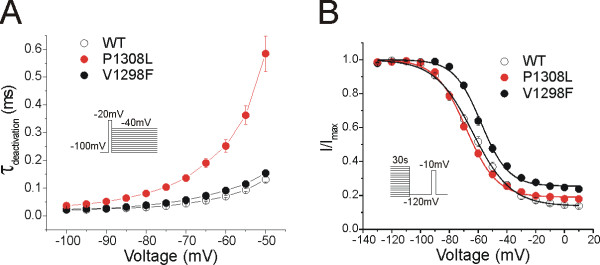Figure 3.
The P1308L and V1298F mutations have different effects on channel deactivation and slow-inactivation. A, To measure deactivation kinetics, cells were held at -100 mV and tail currents were generated by a brief 0.5-ms depolarization to -20 mV followed by a series of repolarizations ranging from -100 to -40 mV to elicit tail currents. P1308L mutant channels (n = 11) showed slower deactivation kinetics than WT channels (n = 15) at all tested potentials, whereas V1298F had no effect on deactivation kinetics (n = 15). B, Steady-state slow-inactivation was examined by a series of prepulses (30 s) from -130 to +10 mV followed by 100-ms return pulse to -120 mV, then a 20-ms test pulse to -10 mV. The V1298F mutation shifted the slow-inactivation curve to more positive potential, whereas the P1308L mutation had no effect on V1/2,slow, slow. Both mutations increased the fraction of channels resistant to slow-inactivation (Rresist).

